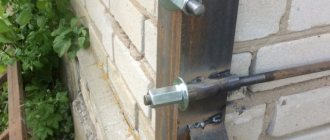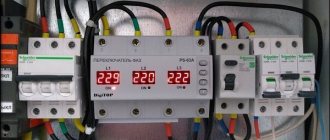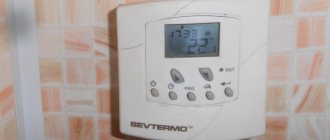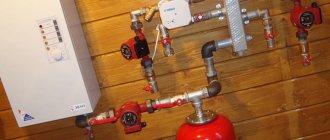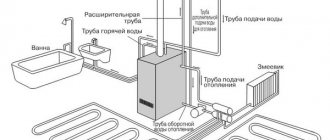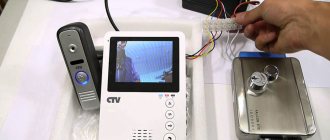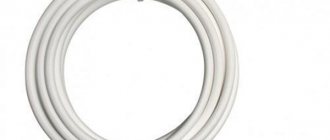Many people are familiar with the residual current device (RCD). A modern electrical network cannot do without this element of protective automation. The main purpose of its installation is to protect people from exposure to electricity and from fires caused by current leaks. Such emergency situations can arise due to worn-out old conductor insulation or poor-quality electrical wiring connections. In order to detect such accidents in time and prevent them from developing into a fire or electrical injury, protective shutdown devices are installed. When installing two-level protection, a selective RCD is used. What is this device? How is it different from ordinary? What other types and types of RCDs are there? Below we will answer all these questions.
What is selectivity
Selective residual current devices perform the same tasks and operate on the same principle as simple ones. The devices compare the current values in the phase and neutral wires and, based on the measurements, calculate the leakage current. If it exceeds the set point, the power supply to the apartment is turned off.
Leakage current occurs in 2 situations:
- Wiring insulation is damaged. There is a risk of fire or electric shock to persons.
- The risk described above paid off. The person touched either the body of an electrical appliance that came under the phase potential, or directly the bare wire from the socket.
Important! The residual current device has one big drawback. If a person simultaneously touches the phase and neutral wires, but does not make good enough contact with the ground, the RCD will not work. The protective device responds to current leakage to ground.
The first parameter of differential protection is operating current.
The nominal row of differential relays has the same row as that of automatic switches (automatic machines) - the first
column in Table 1. The current is selected according to the load power and for a single-phase network is indicated in
the second
column of the table.
Differential relays are the most expensive devices in the electrical network and therefore the value for the machine is chosen lower
.
TABLE 1. Selection of power rating.
2 more nuances about the choice of the operating current of the machine and the RCD.
Fig.1. Class of a two-pole circuit breaker on the front side (in the red oval).
- The machines have an additional class marking in the form of a Latin letter (Figure 1). It means how quickly the machine will open the load circuit when consumption is exceeded. a lot of
passes through it . Excess current leads to failure of the difrel, despite the fact that the machine operates indefinitely with a slight overload. - The wiring is calculated based on the load current consumed (Table 2).
Example 1: How to select an RCD according to power for a water heater (boiler) with a power of 2 kW? The cross-section of the cores should be 1.5 sq. mm. We select the machine according to Table 1 from the standard range upwards - 2 A. The differential relay must have a rated operating current of 3 A.
How to choose 380V? The rating of the machine can be simply calculated as twice the load power. For our water heater – 2kW x 2 = 4 A.
TABLE 2. Maximum current and power for cable cross-section.
- What to do if the consumption of several loads is very large? It is required to supplement 3 loads with a consumption of 16A each with a differential relay. The obvious way is to choose a nominal value of 50 A (rounding up from the value 3x16 = 48 A). Such differential relays are found, but more often they are made in China and are of poor quality. For a number of European companies, the maximum range is limited to 25-30A. Each load must be protected by a separate protective device.
Operating principle of selective RCD
The operating principle of selective protection is based on the difference in shutdown time. For example, consider a typical apartment. There is one common input RCD. It is installed in the electrical panel. Configured to turn off 0.5 s after leakage current occurs. The phase wires from this protective device are distributed among group RCDs. They have a shutdown time of 0.25 s. Through them, sockets in the bathroom, kitchen, living room and other rooms are powered.
If a phase wire in the bathtub shorts to the body of the washing machine, the RCD will trip with a shutdown setting of 0.25 s. It is this room that will shut down. The incoming RCD with a setting of 0.5 s will not work and will leave the apartment energized, since enough time has not passed for it to turn off. That is, an RCD of 0.25 s will work faster than 0.5. The bath will turn off, but not the whole apartment.
Selective power network protection circuit
Features of selective protection
Selective devices, unlike conventional ones, have the ability to select the protection current and response time. The corresponding values are indicated on the device body. By combining the protective system according to these parameters, it is possible to give the protection the property of selectivity.
As a result, if a leakage current occurs in one of the rooms, only the emergency room will turn off, and not the entire electrical wiring. As a result, the time for troubleshooting and troubleshooting is reduced significantly.
Timing characteristics of RCD type S
Devices from different manufacturers have different properties. The differences lie in the leakage current and the dwell time at which shutdown occurs.
Therefore, devices of this type are usually divided into 2 groups:
- ordinary;
- type S.
Selective RCD from ABB: F202 AS, 63A
A comparison of their timing characteristics is given below.
| RCD type | Shutdown time with leakage current equal to Idn | 2*Idn | 5*Idn |
| Regular device | 0,3 | 0,15 | 0,04 |
| RCD type S | 0,13-0,5 | 0,06-0,2 | 0,05-0,15 |
Operating modes
During operation, the residual current device can be in one of two operating modes:
- normal;
- emergency;
Normal operating mode means equality of currents passing through L and N wires. In a differential transformer, magnetic fluxes of equal magnitude but opposite in vector are induced. They compensate each other. The RCD concludes that there is no current leakage. The electrical wiring continues to operate as normal.
In emergency mode, the current in one of the wires is less (more) by the amount of leakage. Usually it does not exceed 100 mA. But even this deviation is enough to disrupt the equality of magnetic fluxes in the device’s transformer and trigger the RCD. The electrical wiring is turned off.
Main characteristics of the device
In order to decide which RCD is the best, when purchasing it, you must take into account all the parameters and technical characteristics.
After information about the manufacturer and brand name, data on performance characteristics and nominal values are applied to the body, such as:
- Name and series. The word “RCD” does not necessarily have to appear in the inscription; many manufacturers call it “VTD” (residual current switch).
- Rated voltage value. It must be single-phase (220 V) or three-phase (330 V) at a standard frequency of 50 Hz. If a device is selected for a private home, then you need to take one that is designed for three-phase voltage.
- Rated operating current is the maximum value that the protective device is capable of handling. There are devices for 16, 20, 25, 32, 40, 63, 80 and 100 A.
- The rated differential current is the leakage value at which the protection is triggered and the electricity is automatically turned off. This value can be 6 mA, 10 mA, 30 mA, 100 mA, 300 and 500 mA.
There is a marking on the case that tells about additional characteristics:
- The value of the rated conditional short circuit current is the maximum short circuit at which the RCD can continue to function normally, provided that an additional circuit breaker is installed with it.
- Protection response time. This is the period of time from the occurrence of a leak until it is eliminated, during which the protection is triggered. The maximum value is 0.03 s.
- Mandatory device diagram.
Types of selective RCDs
Typically, for domestic needs, an alternating voltage of 220 V and a current frequency of 50 Hz is used. However, in the world of electrical engineering, everything is not so monotonous. Some consumers are powered by voltages of other values. The current consumption can be constant. Therefore, RCDs are produced in a wide variety of ways:
- Category AC. Used in alternating current circuits. Insensitive to DC leakage. Example - (ABB FH202)
- Cat. A. Universal. Used in networks with direct and alternating current (IEK VD1-63)
- Cat. S. Used to build selective protection with long time delays (ABB F204 A S-63/1).
- Cat. G. They are used for selective protection, but have long time characteristics (Eaton Electric model PFIM-G).
RCD category AC
Note! A 4-pole RCD is separately distinguished. It is used to power three-phase consumers (frequency drive, motor). This type of protective device requires the connection of 3 phases and zero.
Answers to 5 frequently asked questions:
- Is it necessary to install an RCD in houses where protective grounding is installed?
When the phase conductor is shorted to ground, electricity will “flow” bypassing the neutral wire. In this case, the metal casings of electrical appliances may become energized and will not cause danger as long as the human resistance is much higher than that of the “ground”. However, such a device will be fraught with danger and if there is no significant overload, the circuit breaker will not work. Uncontrolled energy leakage poses a risk of heating and fire. The use of a differential relay will protect against these cases.
- Is it possible to install one automatic circuit breaker after the meter instead of a machine before the meter and an RCD after it?
Yes. It is also possible to install a circuit breaker after the meter if it is necessary to install a disconnector (switch, etc. - PUE requirements) before the meter.
- There are two differential relays connected in series in the circuit. When the protection closest to the consumer is triggered, the entire group of loads is switched off. Which protection device should be removed from the wiring?
It is enough to use a differential relay with selectivity (often marked with the letter S) for a group of consumers. The sequential activation of differential relays is regulated by the requirements of PUE 7.1.73.
- Is it necessary to install an RCD at the input for a wooden private house? After all, the house is “isolated” enough?
Private houses often have input from an overhead line through a long cable. When the consumption value is small, protective shutdown does not occur automatically and quick shutdown is not provided. In addition, according to Technical Circular No. 31.2012, the installation of differential protection is a mandatory fire safety measure.
- Will the differential relay protect in case of a break in the neutral wire?
In the absence of leakage current, the protection will not operate, but when it appears, a shutdown will occur. Thus, even if the zero burns out, it will protect against leakage. The differential relay does not protect against the very fact of a break in the neutral wire. This remark is true for electromechanical protection; for electronic protection, which requires both zero and phase for normal operation, a dangerous condition appears when the protected load can lead to an electric shock. Therefore, the use of the electronic type is not recommended.
Time selectivity
The time selectivity of the protection is based on the response delay. You must use at least 2 devices. They should differ several times in response time. To achieve selectivity, it is important to follow the sequence of arrangement of the RCD. The closer the power source (electrical panel), the longer the shutdown time of the protective device.
An RCD with a maximum time delay is installed at the entrance to the apartment. Typically this is a single phase S type device. This is followed by conventional RCDs with a shorter shutter speed.
Important! The general input protective device is subject to increased reliability requirements. If it fails, downstream consumers will be disconnected or left without protection. Therefore, it is desirable that the input device be from a quality manufacturer. For example, ABB or Schneider.
Leakage current selectivity
Current selectivity works on a similar principle. But the value used for selectivity is not time, but leakage current.
A minimum of 2 safety devices are also used. What is located closer to the apartment panel has a higher operating current value. Typically, for such tasks, fire protection RCDs with a shutdown current of about 100 mA are used. For example, IEK 2p 63A 100mA VD1-63 AC.
Next, devices with a lower leakage current of 5-30 mA are placed in consumer groups (individual rooms). If a fault develops in one of the rooms, then only the low-current 30 mA relay is more likely to operate. And the 300 mA fire protection device installed at the input will remain in operation. Thus, only the emergency room is switched off.
The second parameter is the shutdown current.
The shutdown current is selected from the series in Table 3. Electrical receivers and wiring, due to imperfect insulation or internal structure, contain their own, natural
leak. Before installing a protective shutdown, it is advisable to have it measured by a competent energy supply organization. The leakage current can be calculated based on the natural leakage of 0.4 mA per 1 A of consumption for the load and 10 μA (0.01 mA) per 1 meter of wiring. According to the rules (PUE), the nominal value should not be less than three times the natural value.
TABLE 3. Nominal range of RCDs and recommended electricity consumer.
Let's continue with example 1. Let's take the current consumption equal to the value of the machine (in practice, the value is indicated in the device passport) - 2A, the wiring will be 20 m long. Based on these data:
Iest=2x0.4 + 20*0.01 = 0.8 + 0.2 = 1 mA. We select differential protection with a minimum value of 6 mA.
Response delay
The RCD response delay is one of the most important aspects of its operation. Especially if we talk about selective protective systems, the operation of which is impossible without different time characteristics.
The shutdown time is indicated on the device body. Typically it ranges from 0.001 to 0.5 s, which is enough to build most selective protections. The delay itself is provided using a compact electronic board included in the device.
Nuances of connecting type S modules
Actually, the nuances are the same as those that accompany the process of connecting standard protective devices.
The terminals of each device have a specific purpose (phase, neutral) and are designated accordingly.
Terminal blocks on the protection device and symbols for connecting electrical lines. Also shown is the designation of the button for performing a test operation for correct operation of the RCD.
During installation, it is unacceptable to change the positions of the terminals regarding their purpose in relation to the power circuits.
If you connect a zero bus instead of a phase, there is at least a risk of failure of the device itself. It is extremely difficult to confuse two points, but in practice this happens.
Another nuance is the adjustment of the module to the existing electrical circuit in terms of current cutoff.
If the design does not include current adjustment options, you should select the correct device according to its technical and operational characteristics.
Finally, a mandatory connection nuance is testing the device in the mode of supplying power to the load circuit.
This function is simple and requires only one action - activation of a special button, which is designated on the case/in the documentation as “Test”.
Applications of selective protection
The main task of selective RCDs is to build selective protection. Therefore, such devices are used in a wide range of electrical systems:
- The simplest thing is to use it in an apartment. A selective protective device is needed to turn off the emergency room or outlet specifically.
- Construction of complex electrical circuits with consumers that differ greatly in power. Used for separate power supply of a private house, garage and garden lighting. Typically, in such cases, a three-phase RCD is used.
- In relay protection and automation systems. The selective device allows you to organize time delays and delays for switching between the main and emergency power sources.
Automation relay protection system
Conclusions and useful video on the topic
An accessible and understandable video explanation of the selectivity of the protective device:
The video demonstrates the practice of switching on a group of devices and the actual operation of devices in emergency situations:
You can often find arguments regarding the ease of connecting an RCD to the electrical network of a private home. Along with reasoning, it is often recommended to do this work with your own hands. The motive is well known – saving. However, skimping on your own safety is not the best choice. Therefore, such actions for installing a selective protection device should always be performed by a professional electrician.
Do you have experience using or connecting selective RCDs and can you supplement our material with interesting information on the topic of the article? Please write your comments and ask questions in the block below.
Connecting an RCD with selective cut-off
A selective protective device is connected according to the same rules as a regular one. Difficulties arise if it is necessary to build more complex protection with the simultaneous use of S-type devices with other automation devices.
When assembling the circuit, you should be guided by the following principles:
- Initially, the machine is set to input. It will protect subsequent circuits from short circuits and allow you to quickly remove voltage during repairs or maintenance.
- After the machine, an S-type RCD is connected. Sometimes a fire-fighting device is installed in its place. EKF VD-100 2P with a leakage current of 300 mA is suitable.
- Next come consumers or other RCDs with lower current and response time. If selective protection is required, then additional protective devices are indispensable.
Rarely used protection systems
- A directional system operates on the principle of current and voltage vector. There is always a phase shift between them. Protection devices analyze the difference and, if necessary, turn off equipment in the required sector.
- The differentiated system compares the deviations of parameters at the beginning of the supply line and directly at the unit. If deviations reach a specified value, the situation is considered an emergency. This selectivity is required if power is supplied to very powerful units.

